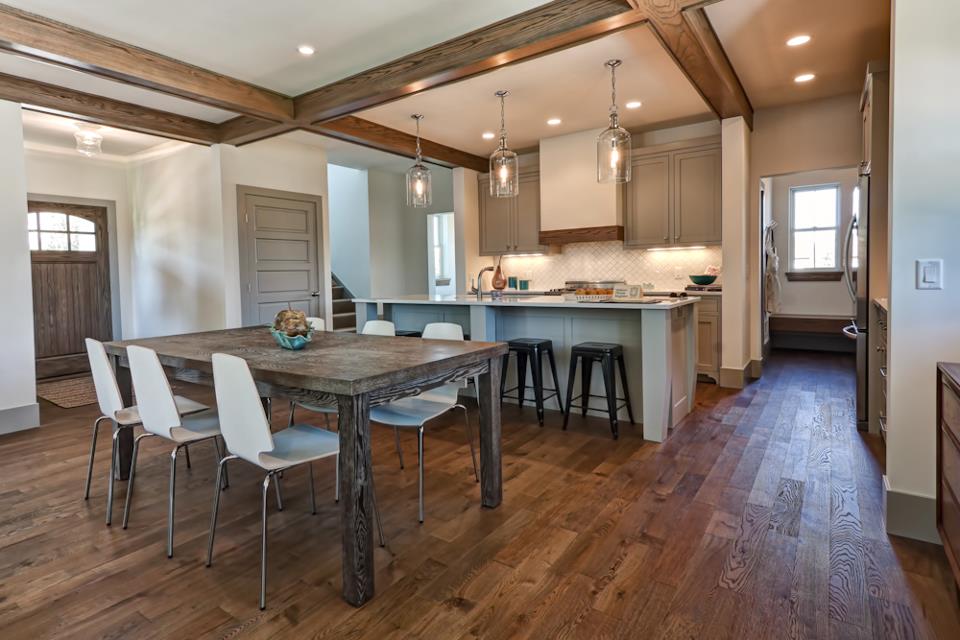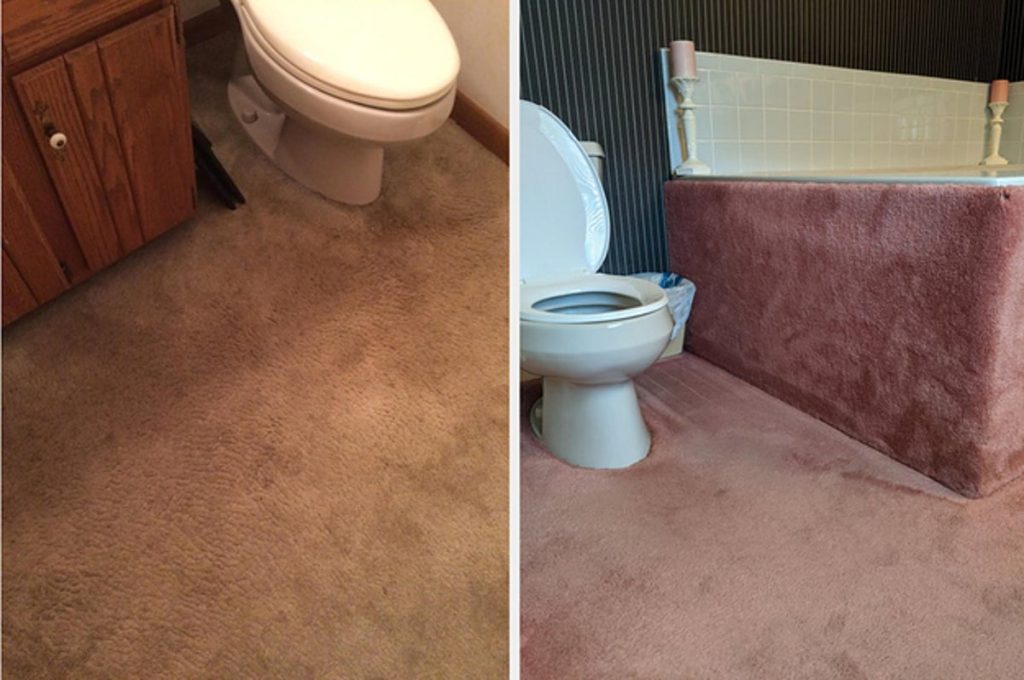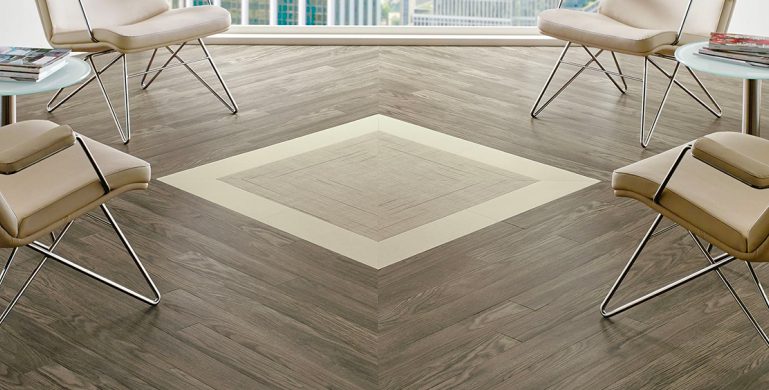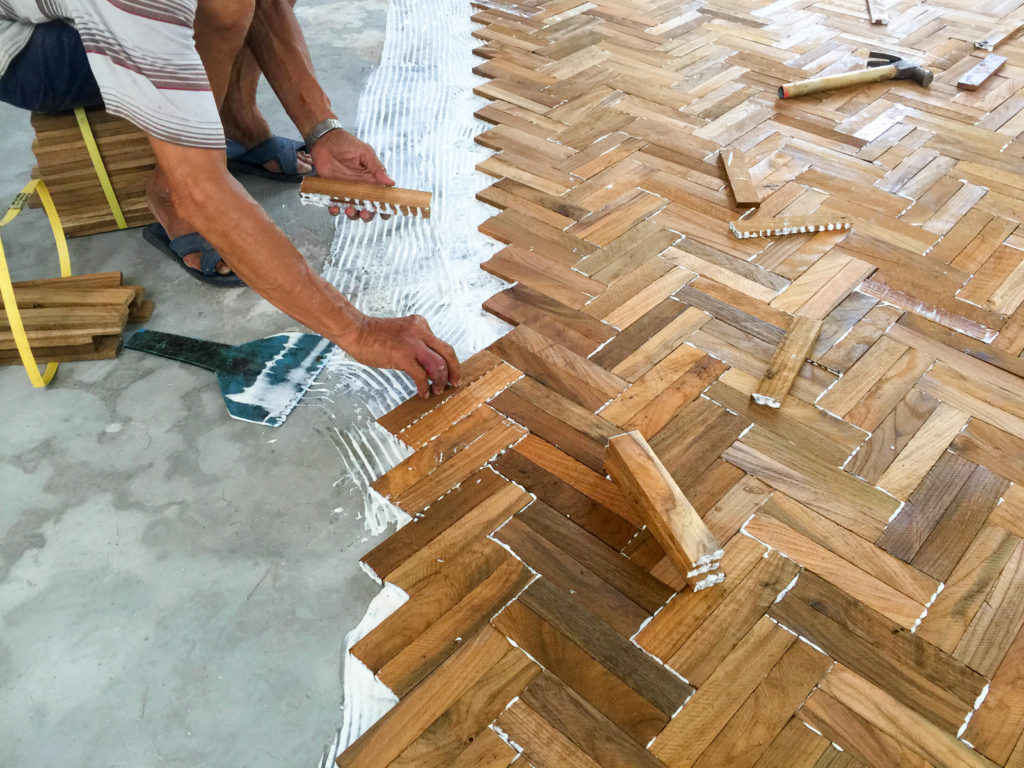
1: Having wood flooring in wet rooms
This is a big no-no. It might look nice. It might provide that rustic feeling. But humidity, water, and high traffic will not mix well with the wood, causing it to warp and require a replacement within a few years. If you still want a more rustic look for your kitchen, consider using laminate instead to get that wooden flooring without all the damage that would apply to real wood.

2: Using the wrong kind of flooring for your space
This ties into having wood flooring in wet rooms, but as seen above there are a host of other choices you can make that are most definitely the wrong ones. Just like the choice of carpet in a bathroom, or using thin and delicate flooring in a room with high traffic areas. These choices end up costing you more effort, more time, and more money because eventually the floors will deteriorate, or develop other issues such as mold and irremovable stains, requiring a new floor much sooner than if the proper flooring was used. So think logically, will the flooring you want for your room fit with that room’s purpose?

3: Having different flooring for each room
This might seem like a good idea at first but we assure you, it’s not. Having different flooring for every room leads to a patchy, roughshod look that is generally unpleasing to the eyes. It can also make your home feel smaller and more cramped. So generally, if you can see the hallway from your kitchen, or your kitchen is connected to your living room, use the same type of flooring for both.

4: Using luxury materials in high-traffic areas
This is not recommended. Luxury flooring tends to be delicate and high traffic will wear it down much quicker, requiring more maintenance and a quicker replacement. So for the sake of your floors and your wallet, check the durability of the material before selecting it for your floor.

5: DIY to cut costs
Now sometimes this is a good idea, and sometimes it saves you money. However, if you do not have the knowledge and experience necessary, do not install your flooring yourself. Doing so will lead to poor installation, which will cause issues as time progresses. Issues will require maintenance and replacement, which will lead to more strain on your wallet than if you had just spent the extra amount to have it installed professionally.

6: Skimping on maintenance
Pretty much everything in your home needs to be maintained and sometimes you won’t have exactly what you need on hand. Therefore you might need to look up a home remedy, and that’s perfectly ok, that’s why they’re there. But you should keep in mind that these remedies are only to be used in an emergency, not as a permanent stand-in for a commercial cleaner. Oftentimes these homemade recipes can cause damage to floors, especially if you’re not using the correct remedy for the issue. Spots and discoloration, even the removal of the top layer of your material can be caused by using a home remedy too often or using the incorrect one. So be sure to check that the remedy you’ve chosen is the right one, and when in doubt just get the commercial cleaner.






